Galileo’s pendulum clock

Inspired by watching a swinging chandelier in a cathedral, Galileo Galilei (1564–1642), an Italian astronomer and physicist, discovered in the late 16th century that pendulums keep a steady rhythm regardless of their swing size. This discovery challenged the prevailing Aristotelian belief that the speed of a pendulum’s swing depended on its arc length and set the stage for a deeper understanding of motion and periodicity. Although he later went blind and never built a working pendulum clock himself, Galileo’s designs and theoretical work laid the foundation for centuries of precise timekeeping and paved the way for the development of the first accurate mechanical clocks in the 17th century. Imagine a world without precise timekeeping; no coordinated train schedules, no GPS, no reliable scientific experiments. Accurate clocks became essential not just for daily life, but for navigation, astronomy, and the advancement of science and technology.
This 3D CAD model brings his groundbreaking concept to life, exploring how a simple observation forever changed our understanding of time.
Timeline
- 1564: Galileo was born
- 1602: Galileo conducted experiments with a pendulum to measure time increments. He explains his findings in a letter to Santorio, a doctor friend in Venice, who then successfully uses a pendulum to measure his patients’ pulses.
- 1616: Galileo declared that the heliocentric system proposed by Nicolaus Copernicus was correct. The Church pronounced this system heretical and instructed him to abandon his view
- 1633: Tried for heresy, and to escape death was forced to abjure any belief in a heliocentric system and faced house arrest for the rest of his life
- 1637: Galileo conceives of the pendulum clock while blind.
- 1642: Galileo died
- 1656: Fourteen years after Galileo’s death, Christiaan Huygens used a pendulum for a weight-driven clock with a crown wheel escapement, thereby inventing the first pendulum clock
- 1667: Based on orders from Grand Duke Ferdinand II, Georg Lederle of Augsburg constructed a pendulum regulator of Galileo’s design and installed it in Florence in the large one-handed clock on the western façade of the tower of the Palazzo Vecchio. There it remains to this day, still accurate to within one minute per week.
- 1690: Christiaan Huygens published a book based on wave theory
how it works
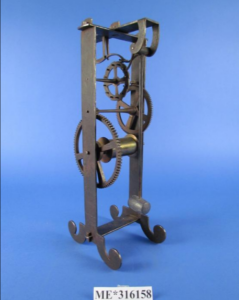
National Museum of American History
Steps to remake
The parts in the prints are combined for similar objects . Also included is a tolerance checker starting at 1.5 mm incrementing by 0.1 mm.
We recommend using 1.6mm Stainless Steel Solid Round Shaft Rods but you could always 3d print or make your own. Video of Pinwheel
Step 1: 3D print on a reliable printer
We provide parts in which you can print together. We had custom supports for most pieces to avoid supports in hard to break off places. Without a reliable print you might run into problems with the gear teeth and especially with the stops in the pinwheel. There is specific spacing so an inconsistency can make the clock inefficient and eventually die out before the weight hit the ground.
Step 2: Assembly
Assembly is straight forward, start with the frame on the bottom and sides, then put in the gears and pins into place, then the top frame and pendulum under.
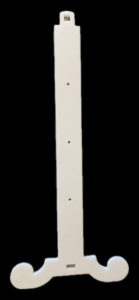
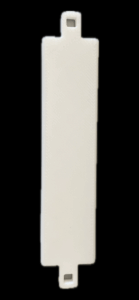
Step 3: Weights and String
In our design we wrapped a copper wire thread around the bottom wire holder. Having a metal thread allows more tension so the string holding the weight breaks off less. Make sure it spins the gear the correct way so that the pendulum and pinwheel still interact. For weight there should be a dense metal or something heavy at the bottom so that there is more force spinning the gear. The piece does not need to fit exactly into the hole but rather evenly distributed on both sides of the holder, like a mallet. Finally for the pendulum weight there should be weight so that it swings but not too much that it slows it down. Same fitting standards as the pulling weight.
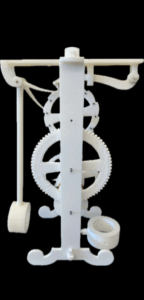
application to Princeton
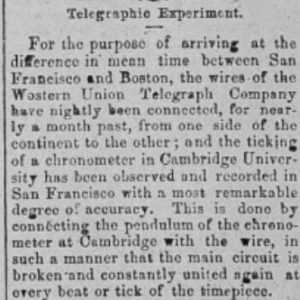
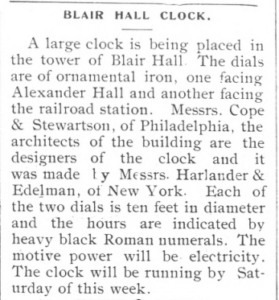
Princeton Standard-FRIDAY, APRIL 23,69 Article from NOVEMBER 7. 1899
Galileo discovered how the pendulum works, which helped optimize the period of oscillation equation discovered by Christiaan Huygens. Huygens later discovered wave theory, which states light travels as a wave instead of beams. Albert Einstein later proposed the wave-particle theory of electromagnetism, which is built on wave theory. Later, Einstein proposed special relativity and the clock paradox, which states that two observers who start together with identical clocks and then undergo different motions can have different total elapsed time on their clocks when they rejoin later. This connects back to Gallio and his clock, tying time together.
Time in any application is important but specifically Princeton it was important for further innovation not only for Einstein but as an endeavor to show off our discoveries. In the top left image we see a discovery for the purpose of telling the passage of time. In this discovery they used oscillation as did Galileo. Time and oscillation go hand in hand making Galileo’s clock the leap frog into innovation. Pendulums with the help of electricity got so good that large clocks became a regular as seen with Princeton’s very own Blair hall clock.
Recources
Galileo’s Pendulum: The Pendulum Clock: The Beat of Nature https://www.jstor.org/stable/j.ctt13x0kt6.8
The invention of the pendulum clock https://museum.seiko.co.jp/en/knowledge/MechanicalTimepieces03/Galileo Timeline
https://www.pbs.org/wgbh/nova/galileo/life.html